 1989 Mazda 323 F IV (BG) Dimensions, Size & Specs
1989 Mazda 323 F IV (BG) Dimensions, Size & SpecsMeasurements of the 1989 Mazda 323 F IV, engineered for optimal performance and comfort
| Dimensions | |
|---|---|
| Length: | 4260 mm167.7 in14.0 ft |
| Width: | 1680 mm66.1 in5.5 ft |
| Height: | 1340 mm52.8 in4.4 ft |
| Weight Specifications | |
| Curb Weight: | 990-1120 kg2183-2469 lbs |
| Maximal permitted Weight: | 1420-1560 kg3131-3439 lbs |
| Tire Specifications | |
| Rims Sizes: | 13-inch rims:
|
| Tire Sizes: |
|
The Mazda 323 F IV (BG) is a compact hatchback produced between 1989 and 1995, known for its balanced size and practical design. With an overall length of 4260 mm (167.7 inches), a width of 1680 mm (66.1 inches), and a height of just 1340 mm (52.8 inches), the 323 F IV offers a low and aerodynamic profile that was typical of its era, contributing to its sporty appearance and efficient urban maneuverability. The vehicle's curb weight ranges from 990 to 1120 kg (2183 to 2469 lbs), making it relatively lightweight, which aids in nimble handling and fuel efficiency. Maximum permissible weight varies between 1420 and 1560 kg (3130 to 3440 lbs), reflecting different trim and equipment configurations. Mazda equipped the 323 F IV with rim sizes ranging from 13 to 14 inches, and the compatible tire sizes include 175/70 R13 and 185/60 R14, allowing for balanced ride comfort and traction. This model was well-received as a reliable and affordable hatchback for daily commuting and small family use. The 323 F IV's compact dimensions place it neatly within the small car segment, offering easy parking and driving in crowded urban settings while still providing sufficient interior space for passengers and cargo. Overall, the Mazda 323 F IV (BG) exemplifies a well-rounded hatchback from the late '80s and early '90s, blending efficient use of space with lightweight engineering to deliver a dependable and versatile driving experience.
Discover the standout features that make the 1989 Mazda 323 F IV a leader in its class
Have a question? Please check our knowledgebase first.
The Mazda 323 F IV (BG), produced from 1989 to 1995, features a length of 4260 mm (167.7 inches), a width of 1680 mm (66.1 inches), and a height of 1340 mm (52.8 inches). These compact dimensions give the hatchback a balanced stance, suitable for urban driving and parking, while offering enough interior space for a small family or daily commuting.
The curb weight of the Mazda 323 F IV ranges between 990 kg (2183 lbs) and 1120 kg (2469 lbs), depending on the specific model and equipment level. The maximum permissible weight spans from 1420 kg (3130 lbs) to 1560 kg (3441 lbs). This spread covers different trim levels and optional accessories, impacting fuel efficiency, handling, and overall performance. The relatively lightweight design enhances agility for a sporty driving experience typical of the compact hatchback.
The Mazda 323 F IV comes with rim sizes ranging from 13 inches (5J to 5.5J width) to 14 inches (5J width), paired with tire sizes like 175/70 R13 and 185/60 R14. These relatively small rim and tire dimensions prioritize comfort and fuel efficiency, offering a smooth ride by absorbing minor road imperfections. The tire aspect ratios and widths ensure adequate road grip and cornering stability, which balances handling with ride comfort in this compact hatchback.
Yes, the Mazda 323 F IV's compact external dimensions make it well-suited to fit inside a standard garage. With a length of 4260 mm (167.7 inches), width of 1680 mm (66.1 inches), and height of 1340 mm (52.8 inches), it comfortably fits into typical residential garages designed for passenger vehicles. Its hatchback design additionally facilitates easier maneuvering in confined spaces. However, it’s always best to measure your specific garage dimensions, but most should accommodate the 323 F IV without any issues.
The Mazda 323 F IV (BG) shows a modest increase in size compared to its predecessor (the third generation 323 hatchback). The 323 F IV is longer and slightly wider, providing improved interior space and cabin comfort. While exact predecessor measurements vary depending on model year, the BG generation's 4260 mm length and 1680 mm width contribute to a more modern and spacious feel. The height remains similarly low to maintain the sporty hatchback styling, enhancing aerodynamics and agility over the older models.
The Mazda 323 F IV's dimensions are typical for compact hatchbacks of the late 1980s and early 1990s. With a length of 4260 mm (167.7 in) and width of 1680 mm (66.1 in), it aligns closely with competitors like the Honda Civic and Ford Escort of that era. Its relatively low height of 1340 mm (52.8 in) emphasizes a sporty profile compared to boxier rivals. The curb weight (990–1120 kg) is comparable, striking a good balance between efficiency and driving dynamics common in this segment during that time.
Despite its modest exterior dimensions, the Mazda 323 F IV offers efficient use of cabin space due to smart packaging typical of hatchbacks. The 4260 mm length and 1680 mm width allow a comfortable seating arrangement for up to five passengers, with sufficient legroom and headroom for its class. The hatchback design also provides a versatile cargo area that expands by folding rear seats, making it practical for daily commuting or light cargo transport without compromising passenger comfort.
Standard rim sizes on the Mazda 323 F IV ranged from 13 inches to 14 inches, with widths generally between 5J and 5.5J. Tire sizes such as 175/70 R13 and 185/60 R14 provided a balance between ride comfort and handling performance. These tire dimensions contributed to responsive steering and adequate grip while maintaining fuel efficiency and ease of tire replacement—an important factor for drivers seeking economical daily transportation.
The Mazda 323 F IV was primarily offered as a hatchback, emphasizing its sporty and practical nature. The 'F' moniker designated the fastback body style with a sloping rear for enhanced aerodynamics and style. This hatchback attracted buyers looking for compact urban vehicles that combined agility, style, and usability. Variants with different trim and engine options supported versatility and broad market appeal in the competitive compact segment of the era.
The Mazda 323 F IV managed a curb weight between 990 kg and 1120 kg, achieving a lightweight design that favored performance and fuel economy without compromising safety. Compared to earlier generations, careful engineering and material use allowed for a controlled weight increase despite the marginally larger dimensions. This balance helped retain nimble handling and reduced overall fuel consumption, which was a key expectation from compact hatchbacks in the early 1990s.
Discover similar sized cars.
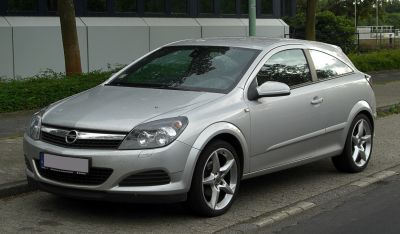
| Production: | 2007-2010 |
|---|---|
| Model Year: | 2007 |
| Length: | 4290 mm168.9 in |
| Width: | 2033 mm80.0 in |
| Height: | 1405-1435 mm55.3-56.5 in |
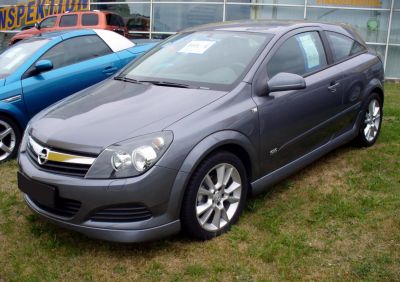
| Production: | 2005-2006 |
|---|---|
| Model Year: | 2005 |
| Length: | 4290 mm168.9 in |
| Width: | 2033 mm80.0 in |
| Height: | 1415 mm55.7 in |

| Production: | 2009-2013 |
|---|---|
| Model Year: | 2008 |
| Length: | 4292 mm169.0 in |
| Width: | 1995-2023 mm78.5-79.6 in |
| Height: | 1423 mm56.0 in |
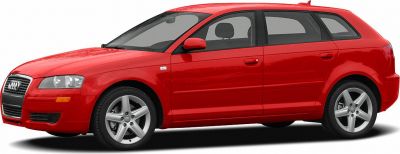
| Production: | 2004-2008 |
|---|---|
| Model Year: | 2005 |
| Length: | 4286 mm168.7 in |
| Width: | 1765 mm69.5 in |
| Height: | 1423 mm56.0 in |
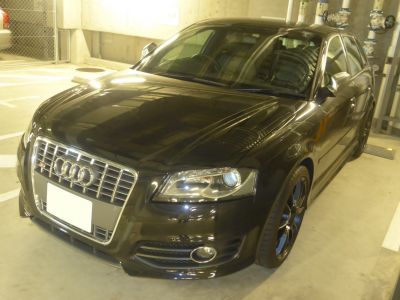
| Production: | 2008-2012 |
|---|---|
| Model Year: | 2008 |
| Length: | 4302 mm169.4 in |
| Width: | 1765 mm69.5 in |
| Height: | 1402 mm55.2 in |
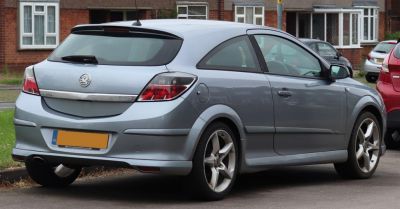
| Production: | 2005-2010 |
|---|---|
| Model Year: | 2005 |
| Length: | 4290 mm168.9 in |
| Width: | 2033 mm80.0 in |
| Height: | 1415-1435 mm55.7-56.5 in |

| Production: | 2017-2019 |
|---|---|
| Model Year: | 2017 |
| Length: | 4329 mm170.4 in |
| Width: | 1984 mm78.1 in |
| Height: | 1411-1430 mm55.6-56.3 in |

| Production: | 2017-2019 |
|---|---|
| Model Year: | 2017 |
| Length: | 4329 mm170.4 in |
| Width: | 1984 mm78.1 in |
| Height: | 1411-1430 mm55.6-56.3 in |
